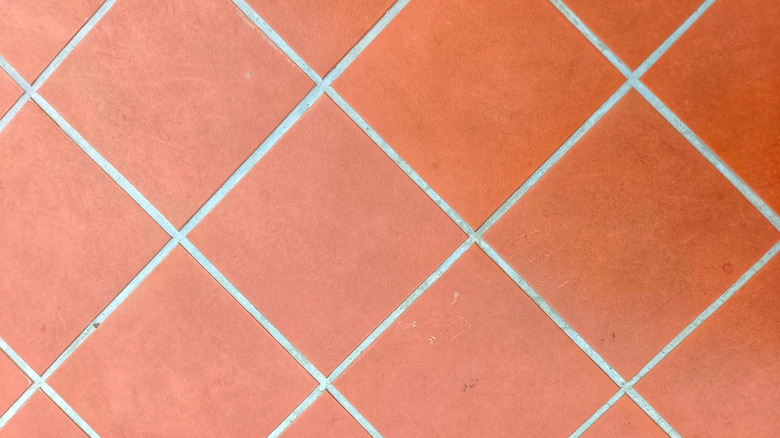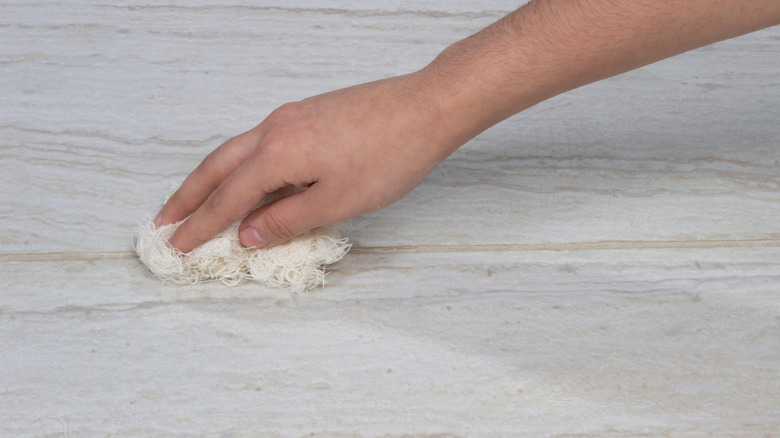Are You Resealing Grout Often Enough? Here's How Often You Should Be
Whether it's inside your shower or the backsplash behind your stove, tile makes a durable, low-maintenance surface with a wide array of design options. However, while keeping the tile itself clean is fairly easy, maintaining the grout that holds it in place can be more difficult. That's because grout is a porous material that readily absorbs dirt and moisture, which can lead to stains and mildew. As a result, scrubbing too hard is a grouting mistake everyone makes in an effort to restore its original color. Most grout is sealed to keep it waterproof and as clean as possible, but the sealant wears down over time, especially in areas that receive heavy foot traffic or moisture. In these locations, such as a main bathroom, you should reseal your grout at least once a year, though experts often recommend resealing it every six months. On the other hand, floors that don't see heavy foot traffic, backsplashes, or countertops typically require resealing every one to two years.
If you're unsure whether it's time to reseal your grout, stains are usually a good indication that it's time for another round of sealant. However, even grout that appears clean may require resealing. Remember that if you don't seal your grout often enough, moisture can easily get in under the tiles and weaken the grout's grip over time. An easy way to determine if you need to reseal is to sprinkle the grout with some water. If the water is quickly absorbed, the sealant has worn away. If the water beads up, the grout is still protected, so you can hold off.
Here's how to reseal your grout when it's time for a refresh
There are numerous professional grout-cleaning and sealing companies that can reseal your grout for you, but many homeowners prefer to handle it as a DIY project. However, choosing the right grout sealer for your tile and grout type is key to successful resealing. It's also essential to thoroughly clean your grout beforehand, removing any obvious dirt or mildew stains. Be sure to give it time to dry completely, though, so the sealant can adhere properly. Before you apply the sealant, it's also a good idea to protect the surrounding area to avoid accidentally getting the sealer on other surfaces. Use painter's tape to cover baseboards, cabinets, and other trim details.
You can use a brush, a foam sponge, or a roller to apply the sealant to your grout. A brush usually offers the most precise application, while a foam sponge typically provides fuller coverage. The sealant's packaging usually includes application instructions for the best results, but you should generally apply the sealer in an even, uniform layer along the grout lines, working in a single direction. Be sure to completely cover the grout without missing any spots, and wipe away any sealer that gets on the surrounding tile right away with a damp towel. Allow the sealant to dry for 10 to 15 minutes before applying any additional coats recommended by the manufacturer. The grout sealer typically has to cure for at least 48 hours, but always follow the manufacturer's instructions.

